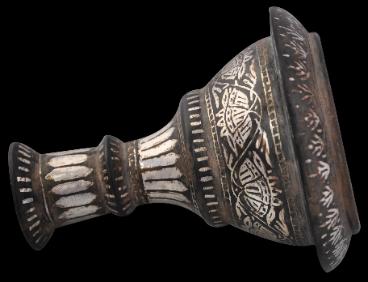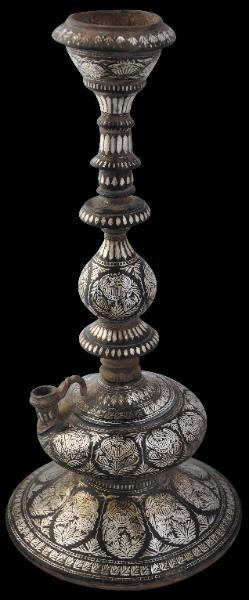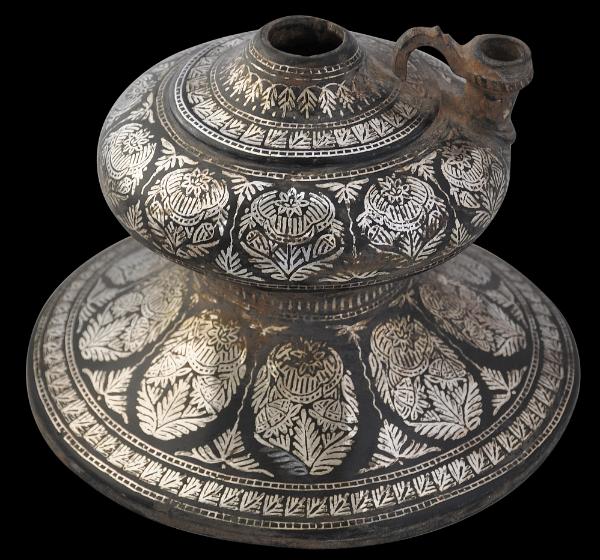
Bidri Hookah, India
Bidri Hookah Base and Hookah Elements
Bidar, Deccan, India
circa 1850
height: 43.5cm, diameter of base: 20.0cm
This hookah base with its waisted body and flared, flat foot (Lal, 1990, p. 77 describes the form as inkpot-like), is decorated in silver with the poppy motif often encountered in bidriware from Bidar. The poppies with their foliage fill repeated oval cartouches. The projecting spout at the side was designed to hold the ‘snake’ hose of the hookah. The base is accompanied by a matching stem and ember cup (chilam), similarly decorated. Usually, extant hookah bases are encountered alone and without their attendant paraphernalia.
Stronge (1985, p. 61) illustrates a related bidri base in the collection of the Victoria & Albert Museum.
Bidriware originated in the city of Bidar in the Deccan. It is cast from an alloy of mostly zinc with copper, tin and lead. The vessels are overlaid or inlaid with silver, brass and sometimes gold. A paste that contains sal ammoniac is then applied which turns the ally dark black but leaving the silver, brass and gold unaffected.
Bidriware caused great interest at the Great Exhibition in London in 1851. It found new European markets and helped to keep alive the craft as demand fell in India with the decline of many of the smaller courts and landed families.
References
Stronge, S., Bidri Ware: Inlaid Metalwork from India, Victoria & Albert Museum, 1985.
Lal, K.,
Bidri Ware: National Museum Collection, National Museum New Delhi, 1990.
Provenance
UK art market
Inventory no.: 1435
SOLD





